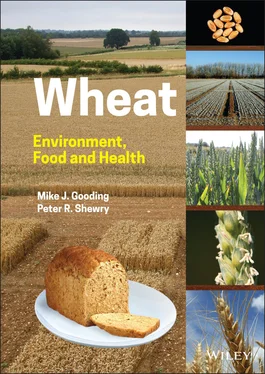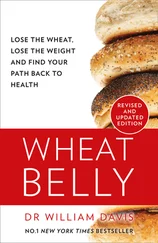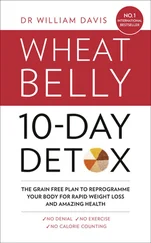| ME |
Wheat type |
Agro‐climatic conditions |
| 1 |
Spring |
Irrigated. Temperate in winter to late heat stress. |
| 2 |
Spring |
High rainfall (> 500 mm during cropping season). Temperate. |
| 3 |
Spring |
High rainfall. Temperate. Acid soils. |
| 4A |
Spring |
Low rainfall. Winter rain followed by drought. Temperate. |
| 4B |
Spring |
Low rainfall. Early drought preceding summer rain. Temperate. |
| 4C |
Spring |
Low rainfall. Soil water stored from monsoon. Temperate. |
| 5A |
Spring |
High rainfall. Hot (coolest month > 17.5 °C). |
| 5B |
Spring |
Irrigated. Hot. |
| 6 |
Spring |
Moderate rainfall. Winter would kill wheat. Coolest month < –10 °C. |
| 7 |
Facultative |
Irrigated. Cool. |
| 8A |
Facultative, daylength sensitive |
High rainfall. Cool. |
| 8B |
Facultative, daylength insensitive |
High rainfall. Cool. |
| 9 |
Facultative |
Low rainfall (< 500 mm available to crop). Cool. |
| 10A |
Winter |
Irrigated. Cold winter. |
| 10B |
Winter |
Rainfall + irrigation. Cold winter. |
| 11A |
Winter, daylength sensitive |
High rainfall. Cold winter. |
| 11B |
Winter, daylength insensitive |
High rainfall. Cold winter. |
| 12 |
Winter |
Low rainfall. Cold winter, hot summer. |
The growth of wheat can be broadly divided into two phases: the vegetative phase and the reproductive phase. The distinction between the two phases depends on events in the bud tip, or stem apex (i.e. the apical meristem if referring to the main stem) of the plant. The vegetative phase encompasses germination, and then a period during which growth from the stem apex gives rise only to vegetative tissues: leaves, tillers (i.e. the branches or side stems of grass plants), and adventitious roots.
Table 1.4 Growth stage scores of wheat plants.
|
Decimal growth stages (DGS) according to Zadoks et al. (1974) |
The scale of Feekes (1941) |
| Major growth phases |
Major division |
Minor divisions described by n |
Score |
Description |
Equivalent DGS score |
| Germination |
0 n |
n indicates development before leaf emergence i.e. from dry seed ( n = 0) to first leaf at coleoptile tip ( n = 9) |
|
|
|
| Leaf production |
1 n |
n is the number of unfolded leaves on the main stem to a max. n = 9 |
1 |
Seedling emergence to three leaf stage |
10–13 |
| Tiller production |
2 n |
n is the number of tillers with their own unfolded leaf to a max. n = 9 |
2 |
Start of tillering |
21–25 |
| 3 |
End of tillering |
26–29 |
| Stem extension |
3 n |
n is the number of nodes to a max. of 6, then n = 7 for flag leaf just visible, and n = 9 flag leaf unfolded |
4 |
Leaf sheaths lengthen |
30 |
| 5 |
Leaf sheaths strongly erect |
30 |
| 6 |
One node detectable |
31 |
| 7 |
Two nodes detectable |
32 |
| 8 |
Flag leaf just visible |
37 |
| 9 |
Flag leaf emerged |
39 |
| Booting |
4 n |
n indicates degree of swelling of the boot |
10 |
Booting |
45 |
| Ear emergence |
5 n |
n indicates proportion of ear or ears emerged |
10.5 |
Full ear emergence |
59 |
| Anthesis |
6 n |
n indicates degree of completion |
10.51 |
Start of anthesis |
60 |
| Grain expansion |
7 n |
i.e. droplet exuded when caryopsis squeezed changes from watery (n = 1) to milky (n = 7) |
10.54 |
Caryopsis water ripe |
71 |
| 11.1 |
Caryopsis milky ripe |
75 |
| Dough development |
8 n |
i.e. no droplet exuded from squeezed caryopsis, thumbnail imprint not retained ( n = 3) to thumbnail imprint retained ( n = 5+) |
11.2 |
Soft dough |
85 |
| Ripening |
9 n |
Grain dry enough to harvest ( n = 2) to seed with no primary dormancy ( n = 7) |
11.4 |
Harvest ripe |
92 |

Figure 1.7 Wheat growth and development. Only main stem shown from stem erect growth stage. Horizontal bars indicate when yield components are principally determined on the main stem. Numerals in brackets are decimal growth stage scores ( Table 1.4).
Source: Reproduced from Gooding (2009) with permission.
1.2.1 Vegetative Phase
1.2.1.1 Germination
Starting with the germination stages, the dried grain (DGS 00) is markedly asymmetric ( Figure 1.8) with the ventral side divided by a crease parallel to the long axis. The embryo is present at the germ end but typically 80% of the grain weight is allocated to the nutrient store of the seed, i.e. the starchy endosperm. The outer parts of the grain consist of compressed cell layers, notably the true seed coat (the testa) and the fruit coat (the pericarp), which, together with the outermost layer of endosperm cells (the aleurone), collectively form the bran on milling (Evers et al. 2006). Germination (DGS = 0 n ) starts in conditions that break or circumvent dormancy, and with adequate moisture, temperature, and aeration ( Chapters 3and 4). Water is imbibed and the aleurone cells are stimulated to produce hydrolytic enzymes that break down the endosperm to release simple sugars and amino acids for the growth of the seedling. Externally, the radicle (root) and coleoptile emerge ( Figure 1.8). The coleoptile is a pale tube‐like structure that protects and facilitates the emergence of the first true leaf. The coleoptile elongates to the soil surface. At least three seedling (seminal) roots will usually have been produced before the plants emerge above the soil surface. The germination phase is complete when the first true leaf reaches the tip of the coleoptile which encases it. The apical meristem is raised towards the soil surface by expansion of an underground stem.

Figure 1.8 The germination phases of wheat. Boxed numerals are the decimal growth stage scores from Table 1.4.
The stem apex usually remains just below ground level during the further vegetative phases, where it is partially protected from herbivory and extremes of temperature. The apex itself may only be 0.1 mm in length ( Figure 1.7) and produces primordia, from which leaves expand and are pushed upwards. The leaf production growth stages (DGS = 1 n ) start with the emergence of the first leaf through the coleoptile ( Figure 1.9). A leaf is counted as being fully emerged or unfolded based on the emergence of the collar, which is the junction between the leaf lamina (or blade) and the leaf sheath. The leaf sheaths are usually hairy (non‐glabrous). The leaf laminas are narrow with about 12 veins. Small additional structures on the collar become visible, particularly on the larger leaves; these are the auricles and the ligule ( Figure 1.9). The auricles are useful for distinguishing wheat from other cereals before the ears emerge. Whereas the wheat auricles are commonly 1–3 mm long and are usually covered in hairs, barley auricles are hairless, oats have no auricles, and rye auricles are much shorter. The ligule is blunt and between 2 and 4 mm long. The sheath and lamina are contiguous. The sheath connects the leaf to its node on the true stem. While the plant is in the vegetative stage, the nodes remain compressed on a short stem (< 5 mm) behind the stem apex at the base of the plant. New leaves become externally visible as they emerge from within the leaf sheath of the previous leaf. The DGS progresses as each leaf becomes fully unfolded ( Figure 1.9).
Читать дальше














